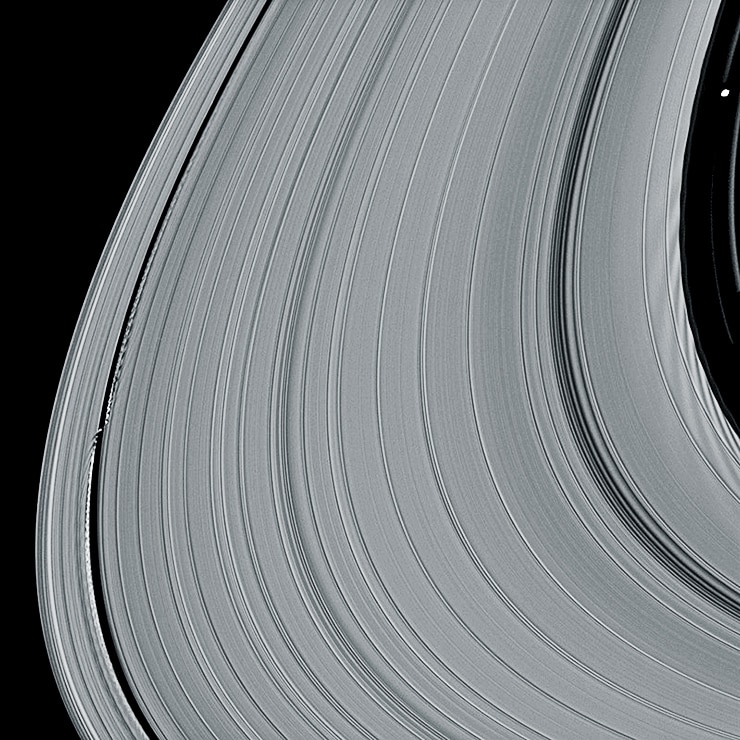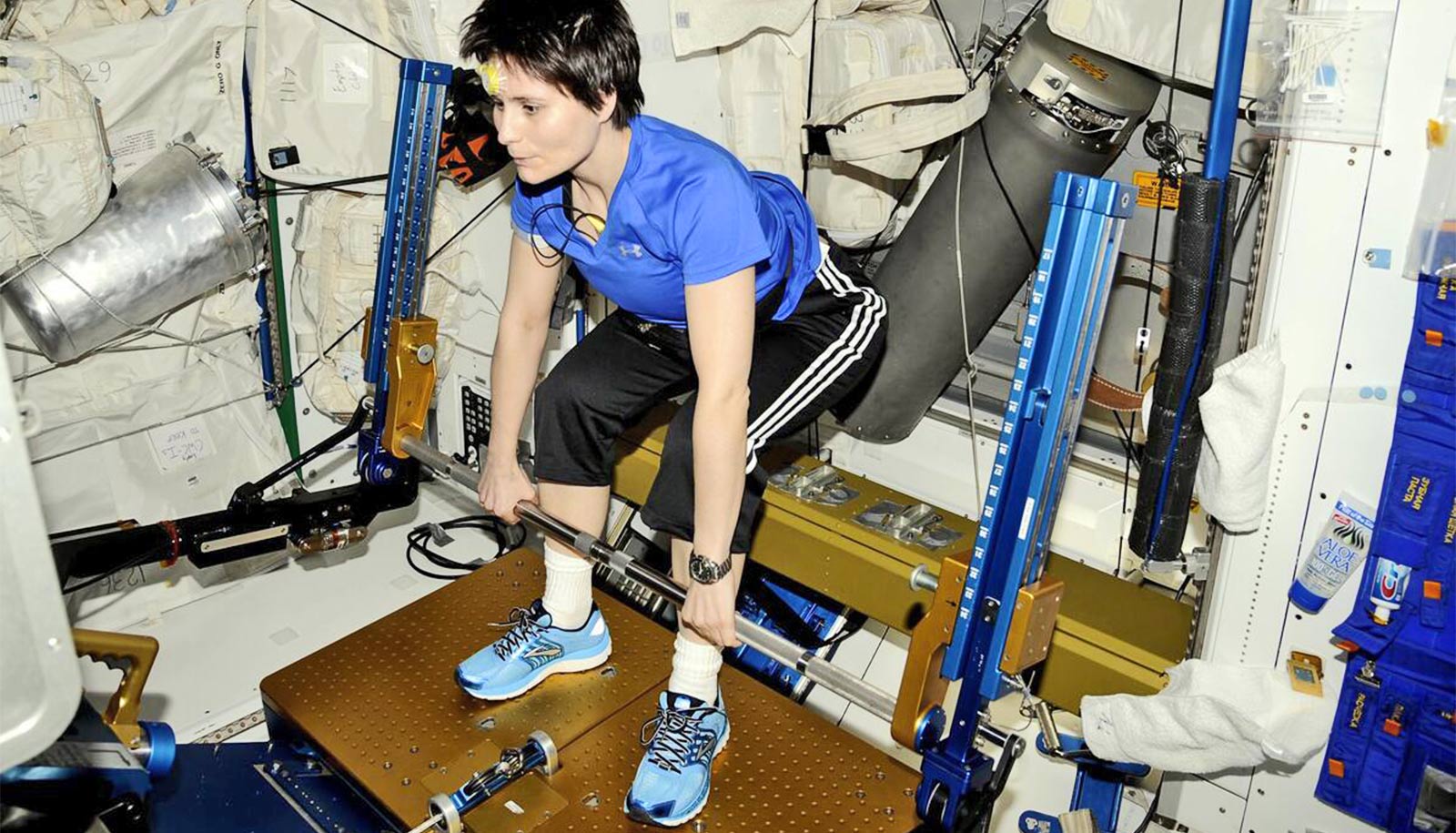After examining data from NASA’s Cassini mission, astronomers have concluded that the teamwork of seven moons keeps the planet’s A ring—the largest and farthest of the visible rings—corralled.
For three decades, astronomers thought that only Saturn’s moon Janus confined the planet’s A ring. Without forces to hold the A ring in check, the ring would keep spreading out and ultimately disappear.

“Cassini provided detail on the mass of Saturn’s moons and the physical characteristics of the rings, so mathematically speaking, we concluded that the moon Janus alone cannot keep the rings from spreading out,” says Radwan Tajeddine, a research associate in astronomy at Cornell University and lead author of the new research.
“Janus has been getting all of the credit for stopping the A ring, which has been unfair to the other moons.”
The scientists discovered that the moons Pan, Atlas, Prometheus, Pandora, Epimetheus, Mimas, and Janus share confinement of the A ring. “All of these moons work as a group to contain the ring. Together they are strong. United they stand,” says Tajeddine.
Cassini, which crashed into Saturn on September 15 at the mission’s end, provided valuable data and detailed images of the planet’s rings. The A ring looks similar to a vinyl record; it has “density waves” that resemble a record’s grooves that are created by what astronomers call moon resonances. These resonance markers enabled scientists to deduce that the moons’ gravitational influence help to slow and reduce the spreading ring’s momentum.
Farewell: Cassini makes its final plunge to Saturn
There are hundreds of density waves spread over the A ring that are generated by different moon resonances. Tajeddine compares it to tug of war with many knots along the gravitational rope. All of these moons’ gravitational pushes slow the ring down and pull momentum from it. So much momentum is lost by the time the ring gets to Janus that the forces create the edge of the A ring.
“This was exactly the sort of information we had hoped the Cassini mission would provide, and by doing so it has allowed us to solve this puzzle,” says senior author Joe Burns, a professor of engineering and of astronomy at the university.
Tajeddine says scientists are still not sure how the rings formed, but the mechanism of their confinement is finally understood. “That’s the novelty of this idea. No one imagined that rings were held by shared responsibility,” he says.
“The density waves created by moons are beautiful to look at, but they actually participate in confining the ring,” says Tajeddine. “Janus has been getting all of the credit for stopping the A ring, which has been unfair to the other moons.”
How a cosmic ‘hit and run’ flipped Saturn’s moon
The study will appear tomorrow in the Astrophysical Journal. Tajeddine also will present this research in a poster at the American Astronomical Society’s Division of Planetary Science meeting October 17 in Provo, Utah.
In addition to Burns and Tajeddine, additional coauthors of the paper are from Cornell University and the Institut de Planétologie et d’Astrophysique de Grenoble, France.
The Cassini mission funded the research.
Source: Cornell University



